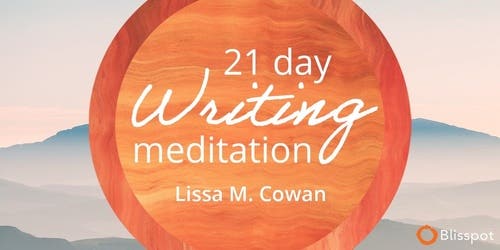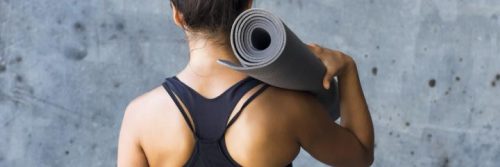When I first began to experience extreme pain in my abdomen I didn’t realize what was happening to me. It was similar to the severe PMS I’d experienced since I started my periods, but this time it wasn’t just a few days each month, it was continuous.
The more I read about my symptoms the more I knew that what I had was endometriosis. After seeing a few doctors with no diagnosis, a gynecologist told me that the only way to know for sure was to have a laparoscopy, which I did. The surgery confirmed my suspicion.
The tissue that forms the lining of the uterus, the endometrial lining, normally grows inside the uterine cavity and is responsible for monthly menstrual cycles. With endometriosis, however, this tissue grows in other areas of the pelvis and sometimes outside. Although rare, endometrial cells have even been found in the brain. Women with endometriosis or “endo” often have antibodies called autoantibodies that battle against their own tissue. In effect, my pelvis was rejecting itself.
Often illness is a warning sign that we’re not tuned into our lives.
At the time of my diagnosis at the age of 30, I was in a dead-end relationship with a smart man who was out-of-touch with his emotions and plagued with self-doubt. He was verbally abusive and unstable. Both in my career choices and in my romantic life I began to realize that I was building a wall around my heart that I’d no idea was even there. My inner life was closed off to me, withering a little more each day.
Little did I know that this illness would be the start of my healing journey.
Chronic pain is difficult to explain to somebody who has never experienced it. I’ve given up trying to describe it to those who cry when they break a fingernail. At best it has felt to me like an achy rumbling coming from the very depths of my being. In Saint Catherine of Siena’s work entitled On Divine Providence she speaks of God as a “fire ever burning and never consumed.” I often think of my pain at its very worst as a fire burning inside me. But when I hear that a saint who lived a very long time ago speaks of God this way I wonder, what is it that converts pain into power or wisdom?
And how could I access that wisdom in order to extract the pain from my being?
On my lengthy healing journey I discovered — through bodywork encompassing craniosacral therapy (CST), yoga, Radical Wholeness embodiment techniques, Jungian dreamwork, yoga, acupuncture, massage therapy, and daily meditation — that I was suppressing my emotions and wasn’t being honest with others and most of all myself. In her book, Women’s Bodies Women’s Wisdom Dr. Christiane Northrup writes of autoimmune disorders with relation to endometriosis that the “mind of their pelvis (is) rejecting aspects of itself.”
What is it that makes the body react in such a kamikaze fashion? Over time I learned that the beliefs we have about ourselves and our place in the world vastly shape the health of our bodies. Every second of every day we’re sending these thoughts out, which, when embraced as truths, become part of our physical makeup.
Destructive (so-called) truths about ourselves become buried deep within us and are so much a part of our being that, much of the time we’re not even aware they exist. Yet, even though we may not know about them, they’re waging a constant tug-of-war with our intuitive selves.
As a child, I often believed I was responsible for things that were beyond my control. My mother would confide her adult problems to me and I was unable to help her. I know that she had nobody else to turn to and that it wasn’t her intention to worry me. Yet, this role of protector and carrier of burdens was transmitted to me without she or me even knowing it.
Sadness, disappointment and a feeling of helplessness emanated from my mother that I picked up on and mirrored. As a child, she was at the mercy of her tyrannical, alcoholic father. His whole family became fused with the pain that he projected outward. She tried also to protect her mother and took on her mother’s pain just as I did for her. Nobody asked her to do this, nor did she ask me. It was a role that we took on freely because we hadn’t the awareness or level of healing to see its potential harm to us.
For the longest time I never really knew what my mother was feeling or thinking. That’s because she often said the opposite of what she felt. In other words, she acted the role of victim or martyr, someone who wasn’t in control of her life and had no power to change things for herself for the better. Deciphering what it was she really wanted deep down was like reading one of those coded books that were passed around during the war to disclose army maneuvers. Not being able to express the truth of what was in her heart had made her sad and unreachable to herself and to others.
As children, we are helpless in situations where one of our parents or another adult is abusive. My mother believed on some level that she was still helpless, even though as an adult she held down an important job, had three children, was a loving, attentive mother, and ran a household.
During the time I spent trying to heal, I had several surgeries to cut the lesions out, yet they only grew back. Then one day I read a passage written by Swami Sivananda Radha who had gone to India as a young woman, became a swami and founded Yasodhara Ashram, the first ashram in Canada. She used the metaphor of surgery in a spiritual context and it really stuck with me.
And so I would like to say to my women sisters of today that you must assume responsibility for yourself. There is no merit in swallowing your pain and tears, and fighting to survive in your family, in your marriage, in society. And yet, there is a particular surgery that you have to perform on yourself, in your own time, in your own way. You can come into your own only if you are willing to look clearly into the deepest depths of yourself. You need to start having a dialogue with that place within yourself to know what is going on, and carefully avoid simply imitating what your male partners are doing. It is here in your innermost depth that you can find yourself.
(Swami Radha. “handmaidens (a message to the women of today).” ascent magazine, 18 Summer 2003, p. 10.)
Western medicine has enabled us to understand much about how the human body functions, yet it has also made a great number of people in our society, especially women, question their power to take charge of their own health and healing. Rather than provide us with the tools to understand ourselves completely as physical, spiritual, and emotional beings, we’re told to look at a minute aspect of a bigger picture of health and forget the rest.
While Eastern medicine offers acupuncture, meditation, yoga, tai chi, Tibetan medicine and ayurvedic medicine, practices that focus on treating the whole person, we in the West are often left with the impression that we aren’t in control of our bodies, have no tangible part in how we heal at all, save as consumers of pharmaceutical products.
For the most part, the medical establishment doesn’t accept the idea of inner wisdom, the stuff of intuition, or entertain the fact that some aspects of the human body — even today — remain a mystery to them. These notions are often ridiculed and stifled in the medical community. It’s funny how so many of us (myself included) have latched onto morsels of so-called wise words that doctors have told us when often we knew more about our conditions than they did.
I know that there are many women out there who share this experience. And, as we can begin to understand our bodies, why not dig a little deeper and see how much more we’re capable of?
How much pain do we accept before we decide to remove the reasons for why the pain came about in the first place? And how much time (or lifetimes) does it take to find out just what those reasons are? This isn’t about turning our backs on Western medicine, not at all, but rather about coming into relationship with our bodies, and with ourselves.
I now listen to my body rather than try to direct it.
Gradually over several years of constant pain, I discovered that my body was telling me to listen to it, that it was a big part of my story. Instead of second-guessing myself by allowing my mind to have the upper hand, I began to listen to my physical self a whole lot more. And as a writer, I also began to approach my writing through this new lens and to guide others on their life paths. In doing this for myself what I discovered was that I was not only able to manage my pain better, but I was able to see creativity as the centerpiece of my life.
After years of struggle and denial, I now listen to my body rather than try to direct it. This new way of seeing and being has made for a richer experience of writing and being creative, and for a deeper, more satisfying life. It has also enabled me to learn about parts of myself and my past that were previously hidden.
Ways to cope with chronic pain and listen to your body:
- Breathe into the pain in your body. Give the pain space to “be” as you focus on the area that’s causing you hurt. Don’t judge it or pull away, just allow it to be.
- Gently close your eyes and send this area of the body loving light. Imagine a golden light surrounding your pain, then your body, and then yourself. As you do this simply breathe and allow the light to wash over your entire body from head to toe.
- As you go about your day, begin to notice the times when you’re in pain or in more pain. What’s going on in your life? Do you have more pain when there’s more stress or when a person in your life is unkind or difficult? When work is overwhelming? Keep a journal and write down when the pain occurs and what’s happening in your life at that time.
- Schedule “Me Time” throughout the day and week. For many of us the thought of taking time for ourselves may feel impossible. Yet even if it’s just 15 minutes to journal or look out the window at the birds, the garden, these pockets of tranquillity may help ease the physical pain you’re experiencing at that moment.
- Do more of what you love. This may sound obvious, but often as our lives become busier and we get more stressed, it feels impossible to do what makes us happy. Write a list of 10 things you love to do and then circle one or two that you’ll practice right now. You may wish to record in a notebook how it felt to make time for the activity.
- Meditate for five minutes and focus on your whole body, not only the painful parts. Think to yourself “this too shall pass” as you breathe and feel into the areas of your body that are pain-free.
- Seek support from friends and family. It’s easy to feel like we want to crawl in a hole and go it alone. When we do this, however, we not only isolate ourselves but we deprive others of caring for us and helping us to cope. Allow others to help during dark times.
- Join a support group that focuses on the ailment, pain or illness that you’re experiencing. Meeting up with others who have similar experiences with pain is a great way to realize that you’re not alone.
- Practice extreme self-care. This includes everything from saying “no” when you’re too tired or unwell, to nourishing yourself with healthy foods and engaging in exercise that feels good to you. You’re the only one who knows what that looks like.
- Turn to nature. When we go outside and experience the wonders of the natural world, this can help release certain blocks, and create space for our pain when it feels overwhelming.
Photo credit: yuris-alhumaydy
To learn more about meditation see: 21 Day Writing Meditation








